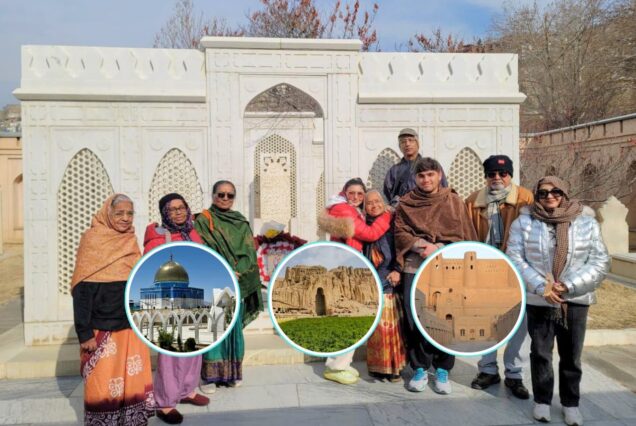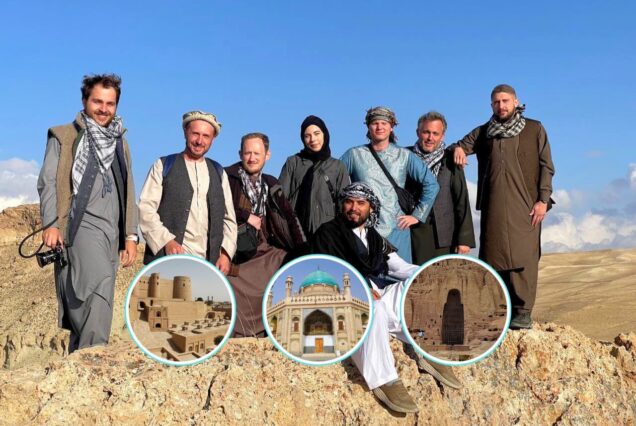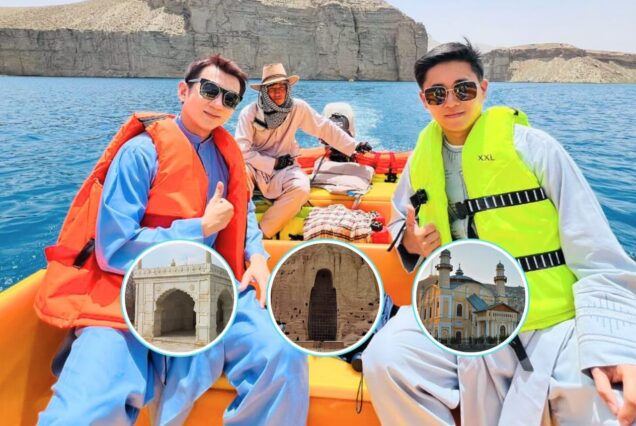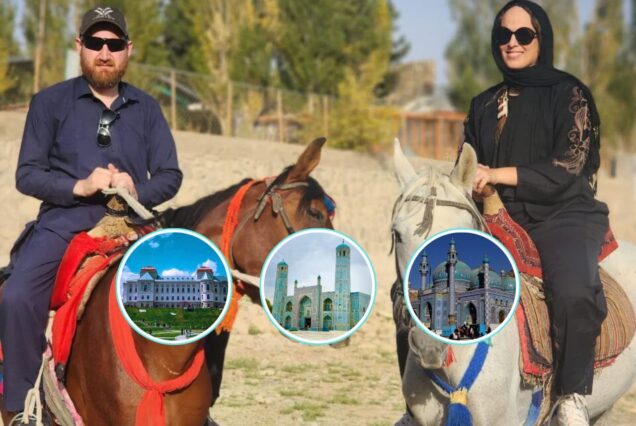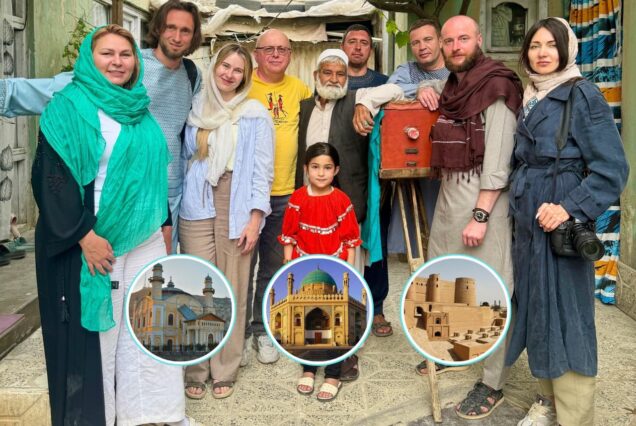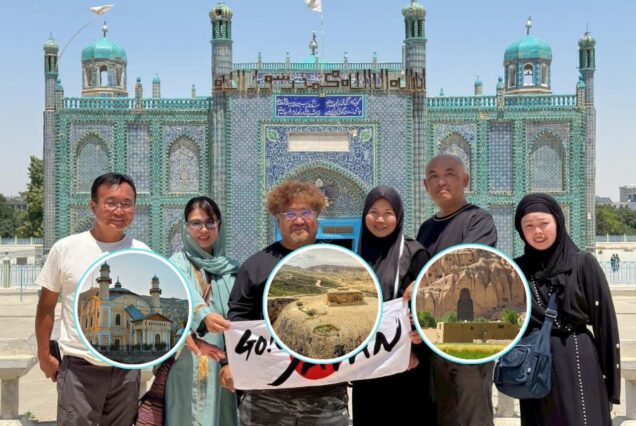One person: 1700 USD, two people: 1250 USD/person, great discounts for groups.
The tour is suitable for both individuals and group travelers.
Date is open
Included/Excluded
- Invitation Letter
- Permit Costs and Taxes
- Pick up and Drop off
- English-Speaking Tour Guide
- All Road Transportation
- All Accommodation
- All Site Entries
- All Meals (Breakfast, Lunch and Dinner)
- Bottled Water
- Sim Card and 10 GB Internet Package
- Visa Fee
- Flights
- Afghan Clothing
Tour Plan
Day 1 Arrival in Kabul
Kabul, capital of Afghanistan since 1776.
- Pick up by the tour guide and driver. Hotel check-in and a short briefing of the tour by the guide
- Money exchange and going to a tailor shop for the local outfit/shirt
- Touring Kabul depending on what time remains: First of all, we will take you to BiBi Mahroo hill (the big flag) to have a bird’s eye view of Kabul city
- Visiting the oldest market, Mandawi bazaar and the Bird market Walking around Pul-e-Khishti Mosque (1793-1800), Nadir Pushtun Wat, Chahar Chatta bazaar and Pul-e-Bagh-e-Omumi to catch the atmosphere of Kabul
- Visiting the Shah-Do-Shamshira Mosque (1544) relates to an early legend concerning the arrival of Islam in Kabul
- Kabuli Paluo, the best local meal in Afghanistan will be served
- Breakfast, lunch and dinner
- Accommodation: Khyber Hotel
Day 2 Herat
- Towards Herat by an early flight
- Registration at the Provincial Afghan Tour department
- Visiting the Masjid-e-Jami or Friday Mosque, built in 1200 by the Ghorid Sultan Ghiyasuddin (died 1202). Today’s restoration of the mosque continues a tradition of architectural decoration of Timurid (15th century).
- There is a Madrasa (Islamic school) inside the mosque where students continue a tradition active in the mosque since the 10th century
- Visiting the Musallah Complex, designed and built in 15th Century by Timurid
- Pushti Kabab, one of the best local meals will be served
- Breakfast, lunch and dinner
- Accommodation: Sadaf Hotel
Day 3 Herat around
- Visiting the Citadel of Alexander the Great 330 B.C. and built in its present form by the Kart Malik Fakhruddin in 1305 A.D.
- Walking around the old city of Herat. The four main bazaars of the old city come together at a center square called the Chahr Suq
- Visiting the Caravanserais located on Silk Road
- Visiting the Malan bridge 1100AD
- A visit to the Shrine of Khwaja Abdullah Ansari, built in 1425, the celebrated Sufi poet and philosopher who was born in Herat in 1006 and died in 1088.
- Breakfast, lunch and dinner
- Accommodation: Sadaf Hotel
Day 4 Back to Kabul and drive to Bamyan
- Back to Kabul by a flight and drive to Bamyan after lunch in Kabu. This is a 4-hour beautiful drive, traveling through the fascinating Hajigak Pass (3700 m: 12,140 ft.), with stops at picturesque rest areas to refresh and take unforgettable photos
- Breakfast, lunch and dinner
- Accommodation: Bam-e-Asia Hotel
Day 5 Bamyan and Band-e-Amir blue lakes
- Registration with the Provincial Afghan Tour department
- Visiting the ruins of Buddha Statues (once tallest standing Buddhas in the world), UNISCO Heritage Site, the Large Buddha, 55 m: 180 ft high (late 5th to the early 7th centuries A.D.). The Small Buddha, 38 m: 125 feet high (the 3rd or very early 4th centuries A.D.). Both were demolished by the Taliban in 2001
- Visiting the ruins of Gholghula City (The City of Screams), one of the eight UNISCO Heritage Sites in Bamyan. Build by Ghaznavids (977-1186) and demolished by Genghis Khan in 1221
- Hiking and sightseeing around Band-e-Amir Blue Lakes. Altitude: 2916 m: 9567 ft
- Lamb Roosh, will be served
- Breakfast, lunch and dinner
- Accommodation: Bam-e-Asia Hotel
Day 6 Back to Kabul
- After breakfast, we will drive back to Kabul.
- A visit to the ruins of Zuhak City (The Red City), UNISCO Heritage Site, on our way. The fortress is believed to have been founded between 500-600 A.D. by the Hephthalites, and demolished by Genghis Khan in 1221
- After lunch in Kabul, a visit to the UNISCO Heritage Site, iconic Babur Garden built by the Mughal Emperor Babur Shah (1528 CE). There are a beautiful marble mosque build by the Moghul Emperor Shah Jahan (1646) and the modest tomb of Babur, founder of the Moghul dynasty of India
- A visit to Ziarat-e-Sakhi or Sakhi Shrine, 18th Century
- Breakfast, lunch and dinner
- Accommodation: Khyber Hotel
Day 7 Back Home
- Visiting more of Kabul depends on what time remains
- We will take you to Chicken Street (antique market). You will find all kinds of handicrafts, Afghan handmade Rugs, gemstones, calligraphy, glass miniatures and oil paintings, antique and ornamental works in Chicken Street.
- Breakfast and lunch
Finally, after a 7-day trip to Afghanistan with lots of unique experiences and heart touching stories we will drop you at the Kabul airport for your flight back home.
End of the tour.
Tour Map
From
$ 1,250 $ 1,700
Enquiry Form

